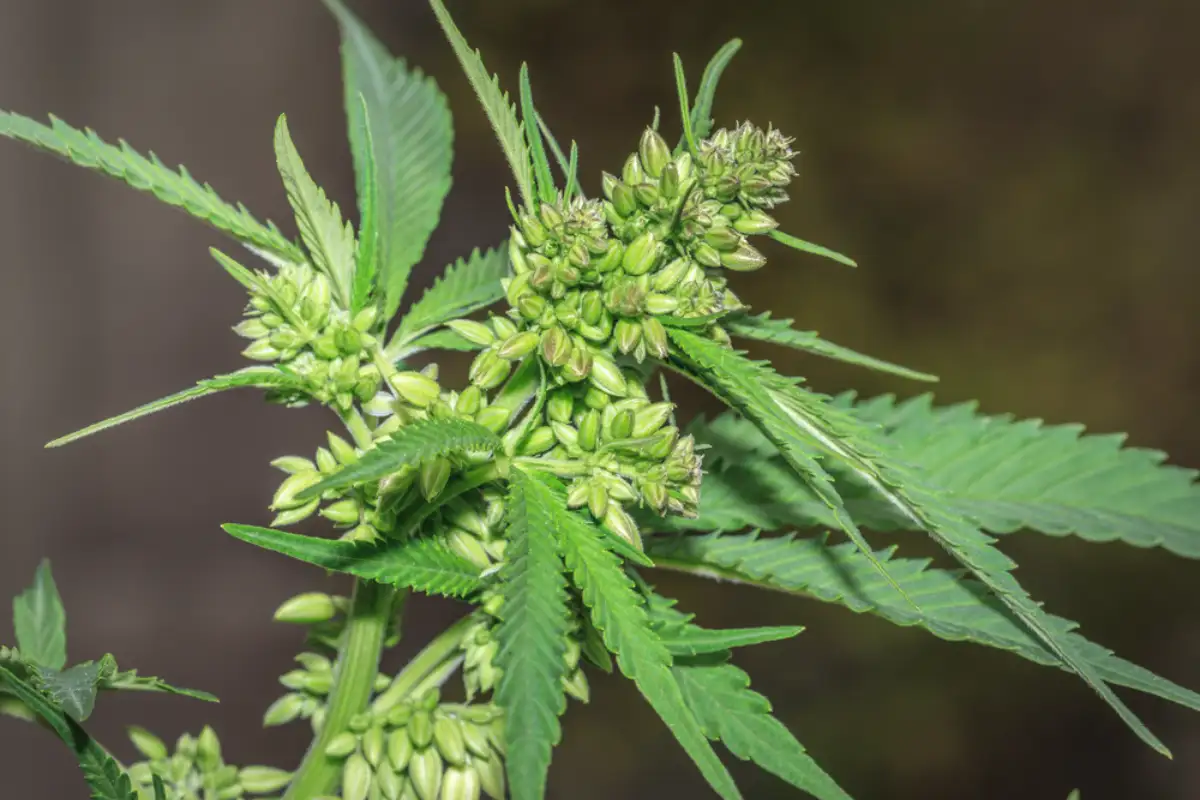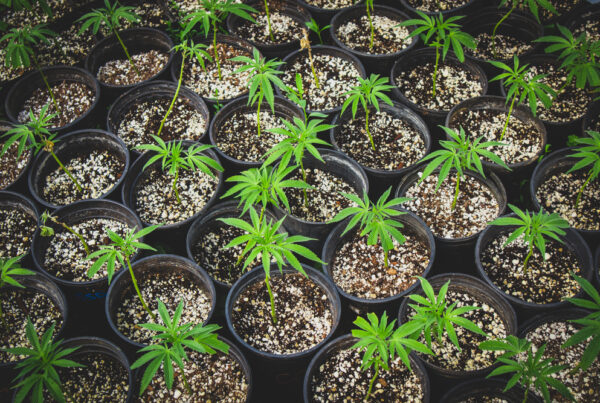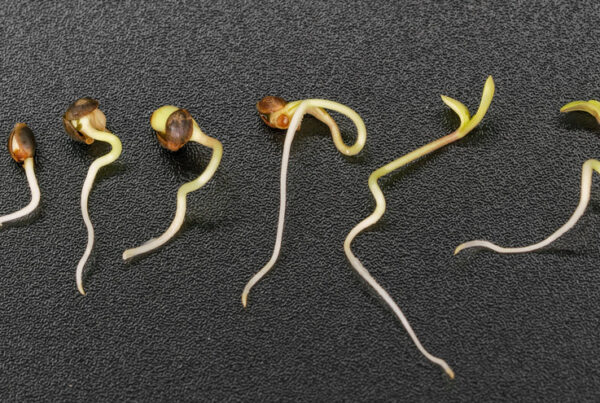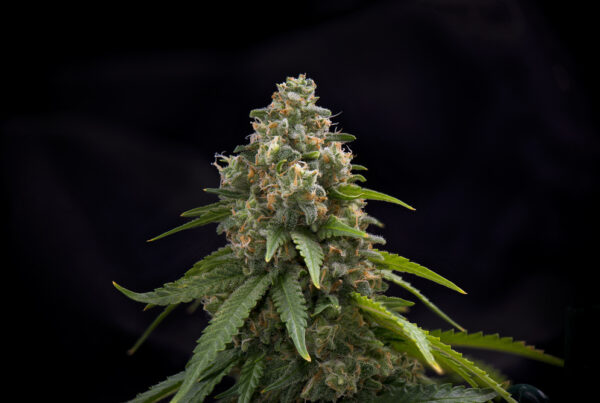Cannabis, also known as marijuana, has gained significant attention in recent years for its therapeutic and recreational benefits. Whether you are a cannabis enthusiast, a home-grower, or simply curious about the plant, it’s important to understand the differences between female and male cannabis plants.
In this blog post, we will delve into the fascinating world of cannabis plants and explore why it is crucial to differentiate between the sexes. We will explore the role of male and female plants in reproduction and uncover the implications that this has on cannabinoid content. By the end of this article, you will have a comprehensive understanding of how to identify male and female cannabis plants and what to do when you encounter them.
Knowing the sex of your cannabis plants is of utmost importance for several reasons. Firstly, it allows you to control the reproduction process, ensuring that only desired traits are passed on to future generations. This is especially crucial for cultivators who wish to maintain a specific strain or create new hybrid varieties.
Furthermore, identifying the sex of your cannabis plants is essential for maximizing cannabinoid content. Female plants produce the resinous buds that are rich in cannabinoids, such as THC and CBD, which are responsible for the plant’s medicinal and psychoactive effects. Male plants, on the other hand, produce pollen that is used for fertilization and seed production. By eliminating male plants from your cultivation, you can focus all the plant’s energy on producing potent buds.
Identifying male cannabis plants is relatively straightforward once you know what to look for. We will explore the physical characteristics that distinguish males from females and discuss their life cycle. Additionally, we will provide guidance on what to do when you identify a male plant.
Similarly, identifying female cannabis plants is crucial for growers who want to harvest the coveted buds. We will delve into the physical traits that differentiate females from males and examine their life cycle. Moreover, we will provide insights into what to do when you identify a female plant.
Lastly, we will touch upon the occurrence of hermaphrodite cannabis plants, which possess both male and female reproductive organs. We will help you understand how to distinguish hermaphrodite plants from male and female plants and provide tips on preventing and managing them.
Understanding the differences between female and male cannabis plants is vital for any cannabis enthusiast or cultivator. By knowing how to identify and handle each sex, you can ensure optimal cultivation practices and maximize the potential of your plants. So, let’s dive into this educational journey and unlock the secrets of cannabis plant sex!
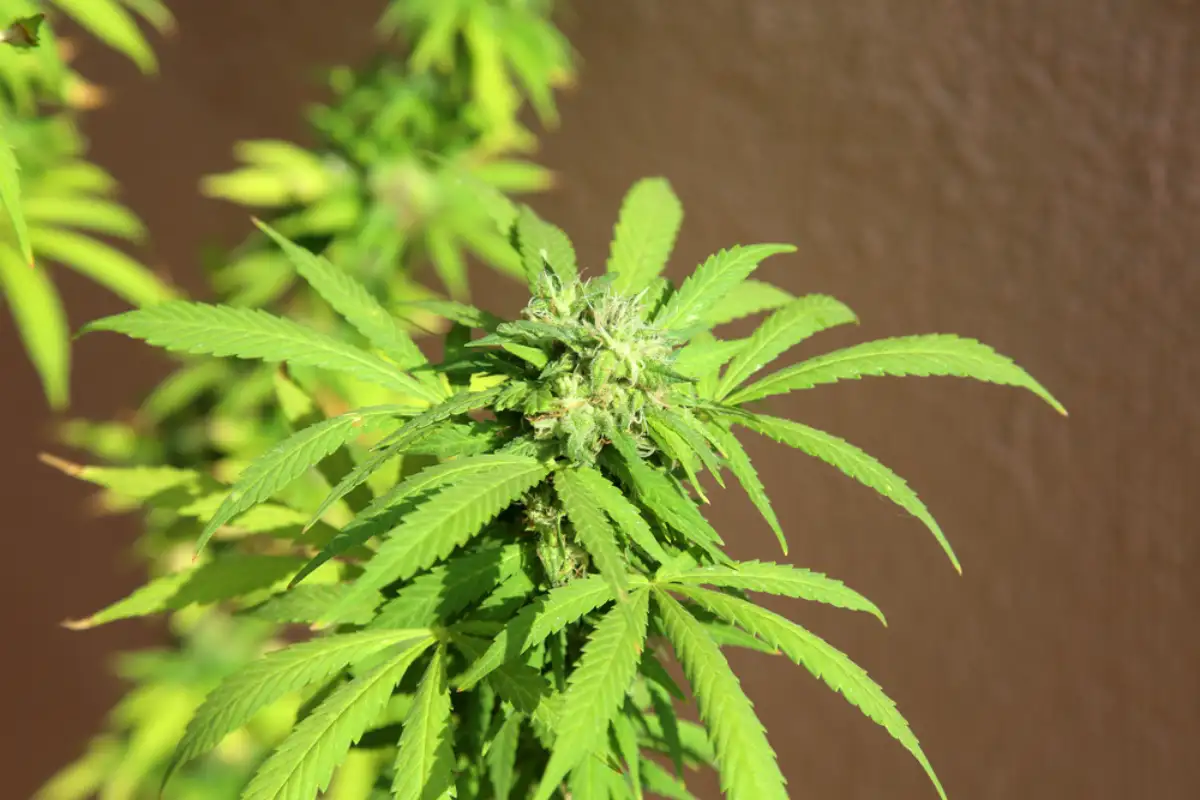
Introduction to Cannabis Plants: Understanding the Basics
Cannabis plants, scientifically known as Cannabis sativa, have been cultivated and used by humans for various purposes for centuries. These plants belong to the Cannabaceae family and are indigenous to regions such as Central Asia and the Indian subcontinent. In recent years, cannabis has gained significant attention for its medicinal properties and recreational use.
To understand the differences between male and female cannabis plants, it is essential to have a basic understanding of the plant itself. Cannabis plants are annual flowering plants that can grow to different heights, depending on the variety and growing conditions. They have a sturdy, upright stem with serrated leaves that are palmate or digitate in shape.
The plant’s leaves are composed of multiple leaflets that radiate from a central point, giving them a distinctive fan-like appearance. The number of leaflets can vary depending on the strain, with some having as few as five leaflets and others as many as thirteen.
Cannabis plants are dioecious, meaning they have separate male and female reproductive organs. The male plants produce pollen-containing flowers, while the female plants produce resinous flowers that are rich in cannabinoids. These cannabinoids, such as tetrahydrocannabinol (THC) and cannabidiol (CBD), are the compounds responsible for the plant’s psychoactive and therapeutic effects.
In addition to the psychoactive cannabinoids, cannabis plants also produce other compounds called terpenes, which contribute to the plant’s aroma and flavor. These terpenes, along with cannabinoids, play a significant role in the overall effects and characteristics of different cannabis strains.
It is worth noting that not all cannabis plants are cultivated for their psychoactive properties. Some varieties, known as hemp, are grown for their fiber and seeds, which have various industrial uses. Hemp plants are typically low in THC and high in CBD, making them ideal for producing products such as textiles, paper, and CBD oil.
Understanding the basics of cannabis plants is the foundation for comprehending the differences between male and female plants. Now that we have a general overview of cannabis plants, let’s explore why it is crucial to differentiate between the sexes and the implications it has on cultivation and cannabinoid content.
The Importance of Differentiating Between Male and Female Cannabis Plants
Differentiating between male and female cannabis plants is of utmost importance for several reasons. Whether you are a cannabis cultivator, a home-grower, or simply a consumer, understanding the sex of your plants can have significant implications on the cultivation process, cannabinoid content, and overall quality of the harvest.
Why Knowing the Sex of Your Cannabis Plants Matters
Knowing the sex of your cannabis plants is crucial for maintaining specific strains and genetic traits. By identifying and removing male plants from your cultivation space, you can prevent unwanted pollination of female plants, ensuring that they produce seedless, high-quality buds. This is especially important for cultivators who are focused on producing potent and resinous flowers.
Furthermore, identifying and separating male and female plants allows growers to control the breeding process. By selectively pollinating female plants with carefully chosen male plants, breeders can create new hybrid strains with desired characteristics, such as increased potency, unique flavors, or specific medical properties. This level of control over the reproductive process is essential for those in the cannabis breeding and genetics field.
The Role of Male and Female Plants in Cannabis Reproduction
In the natural environment, cannabis plants reproduce through sexual reproduction. Male plants produce pollen-containing flowers, also known as “pollen sacs” or “staminate flowers.” These pollen sacs release pollen grains into the air, which can be carried by wind or insects to reach female plants.
Female plants, on the other hand, produce resinous flowers known as “pistillate flowers” or “calyxes.” These flowers contain stigma, which are small, hair-like structures that catch the pollen grains. If a female plant is successfully pollinated, it will produce seeds within its flowers.
By differentiating between male and female plants, growers can prevent the pollination of female plants by removing male plants from the cultivation space. This process, known as “culling,” ensures that female plants focus their energy on producing resinous buds instead of diverting resources towards seed production.
The Difference in Cannabinoid Content Between Male and Female Plants
One of the key reasons for differentiating between male and female cannabis plants is the difference in cannabinoid content. Female plants are primarily responsible for producing the cannabinoid-rich flowers that are sought-after for medicinal and recreational use.
Female cannabis plants synthesize cannabinoids, such as THC and CBD, within their resin glands, also known as trichomes. These trichomes are most concentrated on the flowers, specifically the calyxes and sugar leaves surrounding the buds.
Male plants, on the other hand, have significantly lower levels of cannabinoids compared to females. Instead of producing resinous flowers, they focus on producing pollen for fertilization purposes. As a result, male cannabis plants are generally considered less desirable for their cannabinoid content.
By identifying and removing male plants from the cultivation space, growers can maximize the cannabinoid production of their female plants. This ensures that the energy and resources of the plants are directed towards producing potent buds with high levels of THC, CBD, and other valuable cannabinoids.
Understanding the importance of differentiating between male and female cannabis plants sets the foundation for successfully managing your cultivation space and maximizing the quality of your harvest. In the following sections, we will explore how to identify male and female plants, their respective life cycles, and what steps to take when you encounter each sex in your grow.
Identifying Male Cannabis Plants
Identifying male cannabis plants is a crucial skill for growers who want to prevent unwanted pollination and focus their efforts on cultivating high-quality, seedless buds. Male plants can be identified through their physical characteristics, growth patterns, and reproductive structures. In this section, we will explore how to identify male cannabis plants effectively.
Physical Characteristics to Look for in Male Cannabis Plants
When it comes to physical characteristics, male cannabis plants have a few distinct features that set them apart from their female counterparts. Here are some key characteristics to look for:
- Pre-Flowering Stage: Male plants often show signs of their sex before entering the flowering stage. Look for the appearance of small, ball-shaped structures known as “pollen sacs” or “staminate flowers.” These sacs are typically clustered together in groups, resembling tiny clusters of grapes. They are usually green in color but can turn yellow or brown as they mature.
- Lack of Pistils: Unlike female plants, male cannabis plants do not develop pistils, which are hair-like structures emerging from the calyxes. Instead, male flowers have small, bulbous structures that contain the pollen sacs.
- Node Structure: Male plants tend to have a more elongated and sparse node structure compared to females. Nodes are the points where branches, leaves, and buds emerge from the main stem. Male plants may have longer internodal spacing, meaning that the distance between each set of leaves is greater.
- Growth Patterns: Male cannabis plants generally exhibit a tall and lanky growth pattern, with fewer side branches compared to females. They may stretch towards the light source in search of female plants for pollination.
The Life Cycle of a Male Cannabis Plant
Understanding the life cycle of a male cannabis plant can further aid in its identification. Male plants typically go through several stages, similar to female plants, but with different outcomes:
- Seedling Stage: Male plants start their life cycle as seedlings, emerging from the soil with their initial set of leaves, known as cotyledons. During this stage, it is difficult to determine the sex of a plant.
- Vegetative Stage: As male plants enter the vegetative stage, they develop more branches and leaves, growing taller and becoming more distinguishable. However, the sex of the plant is still not evident at this point.
- Pre-Flowering Stage: Male plants begin to show their sex during the pre-flowering stage. This is when the pollen sacs start to form, typically in the nodes where branches and leaves meet the main stem. It is crucial to identify male plants during this stage to prevent any accidental pollination.
- Flowering Stage: Male plants continue to develop their pollen sacs, which eventually burst open, releasing pollen into the air or onto nearby female plants. Once the pollen is released, the male plant completes its life cycle.
What to Do When You Identify a Male Plant
When you identify a male cannabis plant, it is important to take action to prevent unwanted pollination. Here are some steps to consider:
- Remove the Male Plant: To prevent accidental pollination and ensure the quality of your harvest, remove the male plant from your cultivation space as soon as possible. This can be done by carefully uprooting the plant, ensuring that no pollen is released in the process.
- Dispose of the Plant Properly: It is crucial to dispose of the male plant properly to prevent any potential pollen contamination. Bag the plant and dispose of it away from your cultivation area or compost pile.
- Monitor for Other Males: After removing a male plant, closely monitor your remaining plants for any signs of additional males. Sometimes, seeds or clones can harbor male genetics, so it is important to remain vigilant.
By effectively identifying male cannabis plants and taking prompt action, growers can prevent accidental pollination, maintain seedless buds, and maximize the quality of their harvest. In the next section, we will explore how to identify female cannabis plants and understand their unique characteristics.
Identifying Female Cannabis Plants
Identifying female cannabis plants is essential for growers who want to cultivate resinous, cannabinoid-rich buds. Female plants are the primary focus for many cultivators as they produce the flowers that are sought after for medicinal and recreational use. In this section, we will explore how to identify female cannabis plants effectively.
Physical Characteristics to Look for in Female Cannabis Plants
Female cannabis plants have distinct physical characteristics that differentiate them from male plants. Here are some key features to look for when identifying female plants:
- Pre-Flowering Stage: Female plants typically show signs of their sex during the pre-flowering stage. Look for the development of small, hair-like structures known as pistils. These pistils emerge from the calyxes, which are swollen structures that will eventually develop into buds. The pistils are usually white in color but can turn orange, red, or brown as the plant matures.
- Pistil Formation: Female flowers will develop multiple pistils that emerge from the calyxes. These pistils play a crucial role in capturing pollen for fertilization. They are thin and elongated, resembling tiny hairs or threads protruding from the calyxes.
- Resinous Trichomes: Female plants produce resinous trichomes on their flowers, leaves, and sugar leaves. These trichomes are tiny glandular structures that appear as fine, crystalline-like structures, giving the plant a frosty or sticky appearance. Trichomes are rich in cannabinoids and terpenes, contributing to the potency and aroma of the buds.
- Node Structure: Female plants often have a more compact and bushy node structure compared to males. They tend to have shorter internodal spacing, meaning that the distance between each set of leaves is shorter. This dense foliage helps support the development of multiple buds.
The Life Cycle of a Female Cannabis Plant
Understanding the life cycle of a female cannabis plant can provide further insights into its identification. Here are the key stages in the life cycle of a female plant:
- Seedling Stage: Like male plants, female plants start their life cycle as seedlings, emerging from the soil with their initial set of cotyledon leaves. During this stage, it is difficult to determine the sex of a plant.
- Vegetative Stage: Female plants enter the vegetative stage, growing taller and developing more leaves and branches. At this stage, the sex of the plant is still not apparent.
- Pre-Flowering Stage: Female plants begin to display their sex during the pre-flowering stage. Look for the development of pistils emerging from the calyxes. This is the stage where female plants are most easily identified.
- Flowering Stage: Female plants continue to develop their pistils, which will eventually grow into resinous buds. The flowering stage is when the plant devotes the majority of its energy towards bud development.
What to Do When You Identify a Female Plant
When you identify a female cannabis plant, it is essential to provide proper care and support for its growth. Here are some important steps to consider:
- Provide Adequate Lighting and Nutrients: Ensure that your female plants receive the appropriate amount of light and nutrients during the vegetative and flowering stages. This will promote healthy growth and maximize bud development.
- Monitor for Pests and Diseases: Keep a close eye on your female plants for any signs of pests or diseases. Early detection and proper treatment can help prevent any potential damage to your crop.
- Support Bud Development: As the flowering stage progresses, provide support to the branches to prevent them from bending or breaking under the weight of the developing buds. This can be done using stakes, trellises, or other support systems.
By effectively identifying female cannabis plants and providing the necessary care, growers can ensure the production of resinous buds with high levels of cannabinoids and terpenes. In the next section, we will explore the phenomenon of hermaphrodite cannabis plants and how to handle them effectively.
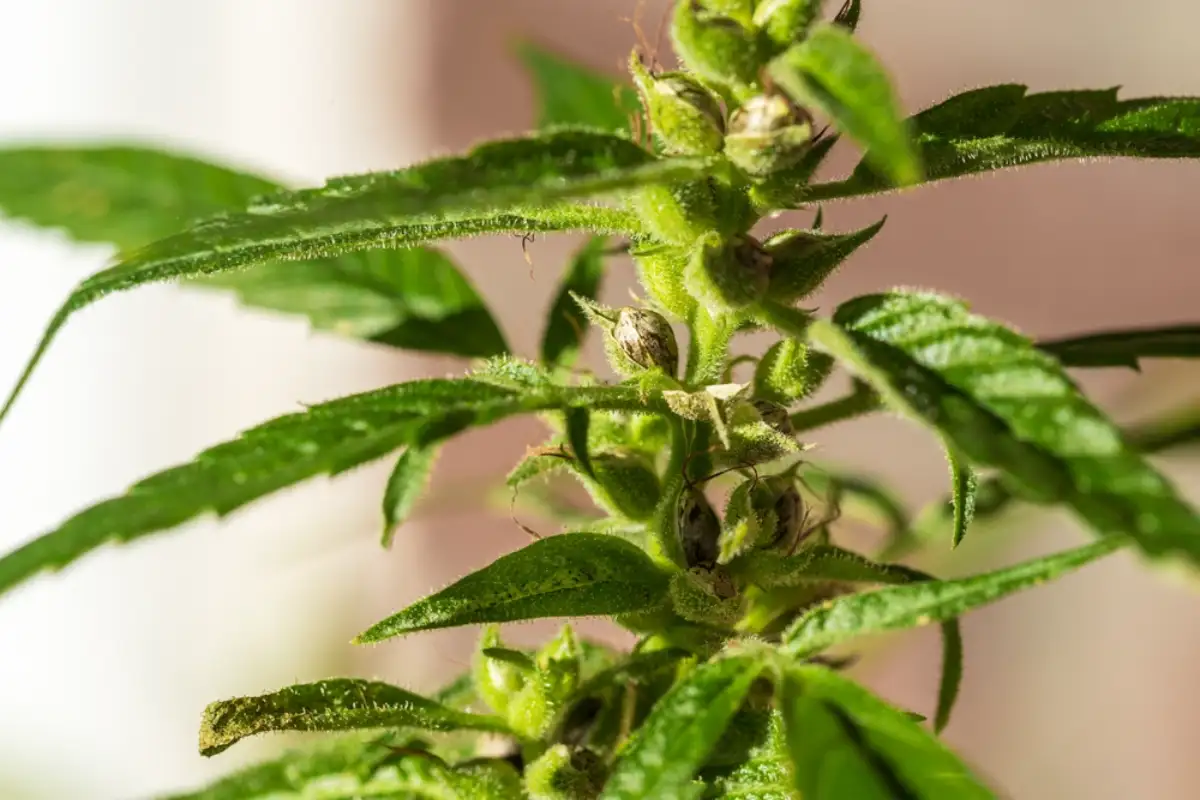
Hermaphrodite Cannabis Plants: What They Are and How to Handle Them
Hermaphrodite cannabis plants are those that possess both male and female reproductive organs. While most cannabis plants are either male or female, hermaphroditism can occur due to genetic factors, stress, or environmental conditions. In this final section, we will explore the occurrence of hermaphrodite cannabis plants, how to distinguish them from male and female plants, and the best practices for preventing and managing them.
Understanding the Occurrence of Hermaphrodite Cannabis Plants
Hermaphroditism in cannabis plants is considered a survival mechanism. When conditions are unfavorable for pollination or when the plant is under stress, it may develop both male and female reproductive parts in an attempt to self-pollinate and ensure seed production.
Hermaphroditism can be caused by genetic factors, such as certain strains being more prone to hermaphroditism than others. Additionally, environmental stressors, such as light interruptions, temperature fluctuations, nutrient deficiencies, or physical damage to the plant, can trigger the development of hermaphroditic traits.
Distinguishing Hermaphrodite Plants from Male and Female Plants
Distinguishing hermaphrodite plants from male and female plants is crucial to prevent unwanted pollination and maintain the quality of your crop. Here are some key factors to consider when identifying hermaphrodites:
- Presence of Both Male and Female Reproductive Organs: Hermaphrodite plants will exhibit both male pollen sacs and female pistils on the same plant. Look for clusters of pollen sacs alongside the development of pistils on individual flowers or branches.
- Observation of Pollen Production: Hermaphrodite plants will produce pollen, similar to male plants. This can be observed by the presence of open pollen sacs and the release of pollen when gently agitated.
- Identifying Stress Factors: Take note of any stress factors that may have contributed to the development of hermaphroditic traits. This can include physical damage, light interruptions, nutrient deficiencies, or extreme temperature fluctuations.
Preventing and Managing Hermaphrodite Plants
Preventing and managing hermaphrodite plants is crucial to maintaining a high-quality crop. Here are some best practices to consider:
- Optimal Growing Conditions: Provide your plants with optimal growing conditions, including consistent lighting schedules, proper temperature and humidity levels, and a balanced nutrient regimen. This can help minimize stress and reduce the likelihood of hermaphroditism.
- Regular Plant Inspections: Regularly inspect your plants for any signs of hermaphroditic traits. Catching them early can prevent pollen contamination and reduce the risk of seed production.
- Prompt Removal: If you identify a hermaphrodite plant, it is best to remove it from the cultivation space immediately. This will help prevent accidental pollination and maintain the quality of your crop.
- Select Resistant Strains: When choosing strains for cultivation, consider selecting strains that are known to have a lower propensity for hermaphroditism. Research and select reputable seed banks or breeders that prioritize stable genetics.
- Stress Management: Minimize stress factors in your cultivation environment by providing consistent lighting, avoiding drastic temperature fluctuations, and ensuring proper nutrition. This can help reduce the likelihood of hermaphroditic traits emerging.
By being vigilant and taking proactive measures, growers can effectively prevent and manage hermaphrodite cannabis plants, ensuring a higher quality harvest free from unwanted pollination and seed production.
In conclusion, understanding the differences between male and female cannabis plants is crucial for any cannabis cultivator. By identifying and differentiating between the sexes, growers can control the breeding process, maximize cannabinoid content, and produce high-quality resinous buds. Additionally, recognizing the occurrence of hermaphrodite plants and effectively managing them ensures a successful cultivation journey. With this comprehensive knowledge, you are well-equipped to navigate the world of cannabis plant sex and optimize your cannabis cultivation endeavors.



